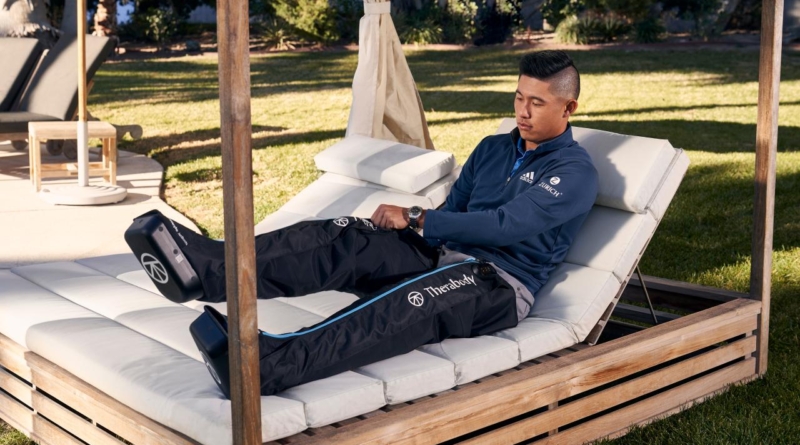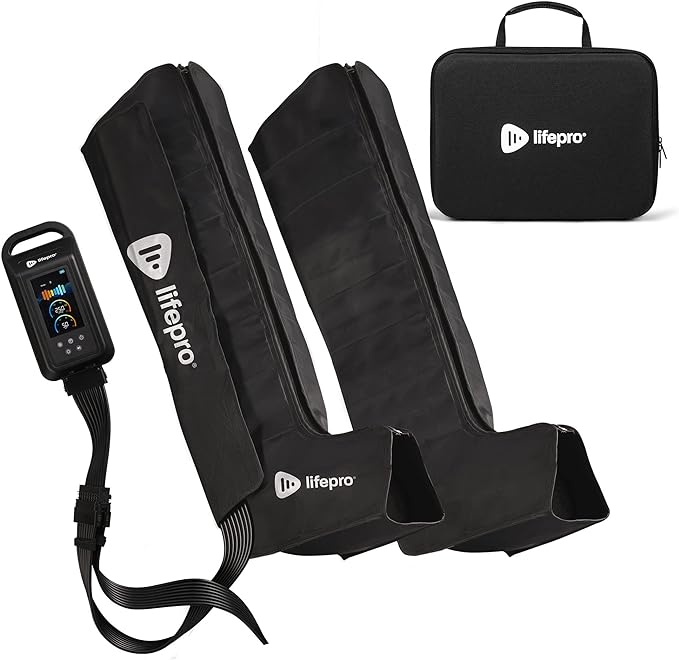Compression Boots: Experts Explain Their Benefits and When to Use them
You might have noticed compression boots at sports events, in physiotherapy clinics, or on social media. These devices, which are gaining popularity, are often used by athletes and fitness enthusiasts alike to recover from intense physical activity.
But what exactly do these boots do? Essentially, they act like an air massage for your legs. Manufacturers suggest that they enhance blood circulation and expedite the removal of lactic acid from your muscles. The aim is to speed up the recovery process. So, let’s delve into the actual advantages of using compression boots.
Benefits of Compression Boots
Compression boots operate through intermittent pneumatic compression. This means they inflate and deflate in a rhythmic pattern, applying varying levels of pressure along different areas of your legs. This process is designed to boost blood flow.
Kathleen Leninger, D.P.T., a New York City-based physical therapist at Custom Performance, explains the science behind it. Our bodies continuously produce metabolic waste during energy production and consumption. This waste is circulated in our blood. Since the legs are positioned below the heart, it’s more challenging for the heart to pump this waste from the legs to the lymphatic system, which is responsible for waste elimination.
The principle behind compression boots is straightforward: by applying compression, they aim to enhance blood flow to the legs. This increased circulation helps in moving the metabolic waste more efficiently, allowing the body to dispose of it quicker.
Research has been delving into the effectiveness of compression boots in enhancing blood circulation post-exercise. A notable study in the Journal of Applied Physiology in 2018 indicated that intermittent compression during recovery can boost limb blood flow. This has potential implications for exercise performance and recovery. However, it’s worth noting that this study was relatively small, involving only 12 healthy individuals.
Cycling, whether it’s a high-intensity indoor session or an extended outdoor ride, invariably leads to microtears in muscles due to repetitive strain. Kathleen Leninger, D.P.T., points out that these microtears often result in edema, or swelling, as the body initiates repair. While this swelling naturally subsides with proper rest, including staying off your feet and elevating your legs, compression can play a role in reducing recovery time. It’s particularly useful for those who have limited time for rest, like needing to head to the office right after a cycling session.
Leninger further explains that the metabolic waste produced during a workout occupies space in your cells that could otherwise be used for blood to deliver new nutrients to muscles. The quicker the muscles receive these nutrients, the faster they repair and rebuild.
check out our best pick for Compression Boots
Supporting the benefits of compression boots, a 2016 clinical trial published in the Journal of Orthopaedic & Sports Physical Therapy with 72 ultramarathon runners demonstrated that post-exercise pneumatic compression therapy yielded similar benefits to post-exercise massage. Additionally, a 2018 study in the International Journal of Exercise Science, involving eight participants, found that daily treatments with a pneumatic compression device reduced recovery time from muscle soreness more effectively than a continuously-worn compression sleeve. These studies suggest that compression boots may indeed be a valuable tool for accelerating recovery in athletes and fitness enthusiasts.
A 2015 study involving 24 elite Olympic athletes (split evenly between women and men) highlighted the benefits of pneumatic compression therapy. Athletes who underwent a 15-minute session of this therapy after their morning training reported less muscle sensitivity – a decrease in their pain pressure threshold – both immediately after the session and after their afternoon practice. This contrasted with their counterparts who didn’t use compression therapy and didn’t experience similar pain relief.
It’s important to note, however, that while physiological benefits are evident, the impact on performance metrics isn’t as clear-cut. Research suggests that users may feel better post-use, but there’s less evidence to confirm direct improvements in performance. That said, feeling better could indirectly enhance performance for some athletes.
Professional mountain biker Kaysee Fulbright (formerly Armstrong) shares her personal experience with Normatec boots. She found them particularly helpful for recovery after long training sessions or travel, noting that they provide an incentive to relax and elevate her legs, even on days when she’s not up for a recovery ride.
Beyond the research, there’s a subjective aspect to using compression boots. Many users find simply wearing these boots, which feel like air-filled sleeves around the legs, to be quite enjoyable, akin to receiving a massage. As Leninger suggests, if the primary benefit you derive is taking 20 minutes to sit back and relax while using them, that in itself can be valuable.
Comparing Compression Boots and Compression Socks: Key Differences
While compression boots and compression socks might seem similar at first glance, they actually function quite differently, which is reflected in their varying price points.
Compression tools are generally of two types: consistent and intermittent pneumatic compression. Compression boots fall into the latter category, offering intermittent pneumatic compression. This means they mechanically inflate and deflate different sections of a sleeve at varied intervals. These boots cover the entire leg up to the thighs, ensuring that the whole leg benefits from the compression.
Compression socks, in contrast, provide a steady squeeze to the legs without any variation in pressure or movement. They are designed to be tighter at the foot and gradually become looser towards the top, aiding blood flow upwards from the feet. This helps in reducing swelling and discomfort in the legs.
One of the key advantages of compression boots is the ability to adjust the pressure level, something not available with compression socks. They offer a more dynamic form of compression, akin to the difference between active and passive stretching. Eric Madia, a strength and conditioning coach based in New Jersey, notes that the level of compression provided by mechanical devices like these boots is significantly more effective and faster-acting than that of compression socks.
However, it’s crucial to pay attention to any new or worsening leg swelling after running. If such swelling doesn’t improve within a couple of weeks, seeking medical advice is important. John Vasudevan, M.D., an associate professor at the University of Pennsylvania, warns that noticeable swelling in healthy athletes could indicate a range of issues, from age-related venous insufficiency and hypertension to more serious cardiac conditions. Therefore, it’s essential to understand the underlying cause of such symptoms.
Understanding the Limitations of Compression Boots
While compression boots have gained popularity among athletes, there are notable downsides to consider, the most significant being their cost. High-end models can set you back around $1,000, a steep investment for many, especially cyclists.
Another challenge lies in their usability. Professional physical therapists are adept at selecting the right settings based on an athlete’s training needs and feedback. However, for individuals using these boots at home, determining the optimal settings may not be as straightforward.
Moreover, the research supporting the benefits of compression boots, although promising, often involves small study groups. This limitation raises questions about the generalizability of the findings. For instance, a 2021 review in the Journal of Sport Rehabilitation, which analyzed three studies on intermittent pneumatic compression, concluded that it wasn’t effective in reducing muscle damage in endurance athletes. It did, however, acknowledge some short-term relief. Similarly, a 2020 study in the International Journal of Exercise Science, involving just 10 distance runners, found no significant benefits from this type of compression.
In summary, while compression boots may offer certain advantages, the need for more extensive and long-term research is clear to conclusively validate their efficacy. Until then, the scientific community remains cautious about fully endorsing the widespread benefits of these tools.
Maximizing Recovery with Compression Boots: Tips and Techniques
The principle is simple: the more intense your workout, the more recovery your body needs. Eric Madia, a strength and conditioning coach, emphasizes that strenuous exercises lead to an accumulation of metabolites and waste in your cells, which need to be cleared out for effective recovery.
For optimal use, slip into compression boots after demanding workouts like interval training, lengthy rides, or any high-effort exercise. They’re particularly useful when you’re facing consecutive demanding sessions, advises Kathleen Leninger, D.P.T.
Madia suggests using the boots three to four times a week to maximize recovery. This frequency, he notes, strikes the right balance between workouts and recovery, as observed in athletes he works with.
While using compression boots, it’s crucial to monitor the pressure level. Madia advises staying below level seven to avoid discomfort and numbness. Tingling in your feet or visible impressions from the boots’ seams on your legs are indicators that the pressure is too high.
Typically, it’s best to use compression boots post-workout. This aligns with your nervous system’s needs: stimulation before exercise and relaxation afterward. The boots help shift your body into a ‘rest and digest’ mode, essential for recovery.
A 30 to 35-minute session post-workout is recommended. This duration has been found effective in flushing out waste and aiding recovery. Use this time to unwind, perhaps by watching your favorite TV show.
However, it’s important to remember that these devices primarily offer short-term benefits, as noted by John Vasudevan, M.D. They can alleviate discomfort and soreness but don’t directly enhance recovery or performance. Hence, don’t skip essential recovery steps like cooling down, rehydrating, and consuming adequate protein.
Leninger points out that compression boots can also be beneficial for non-athletic stress. For individuals with occupations that require prolonged standing, like waitressing, using the boots before a workout can aid in leg recovery. In such scenarios, a 10 to 15-minute session before exercising can be helpful.



